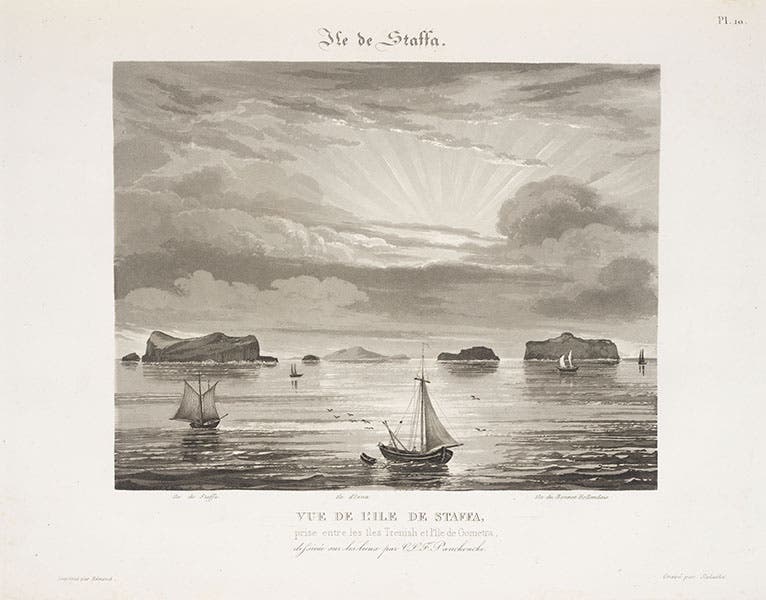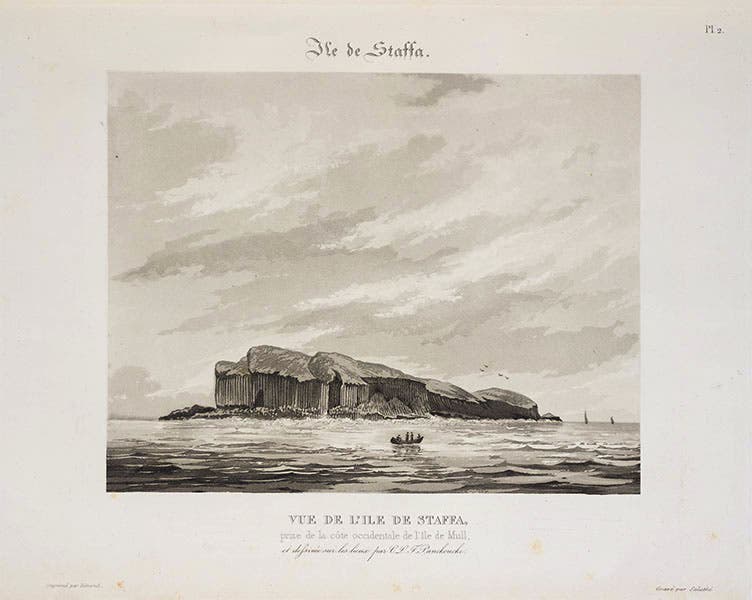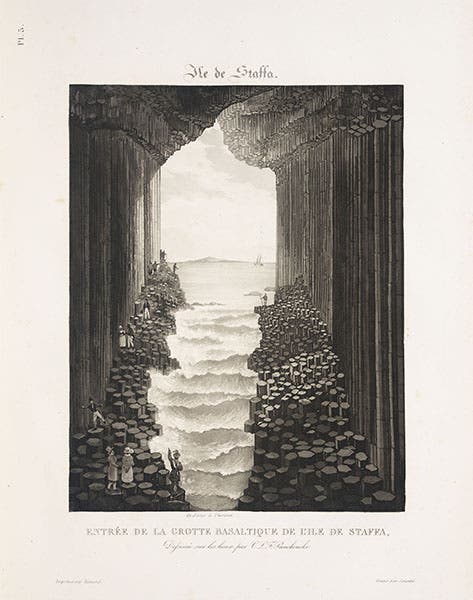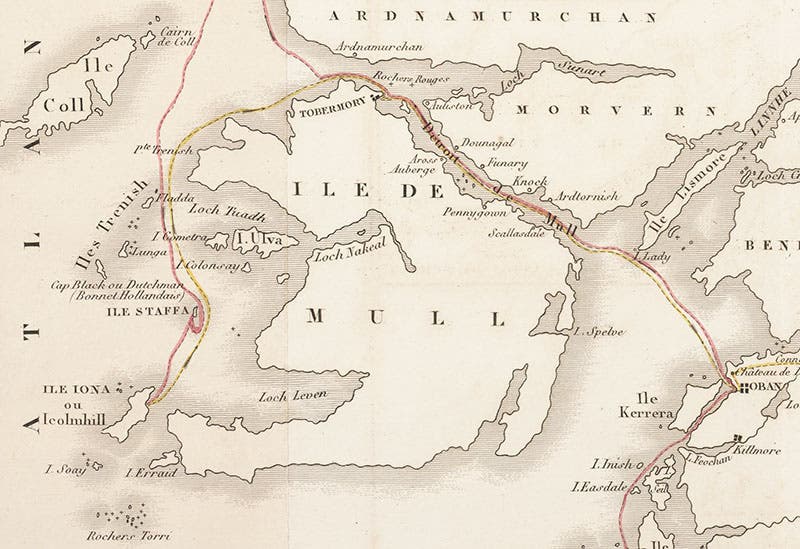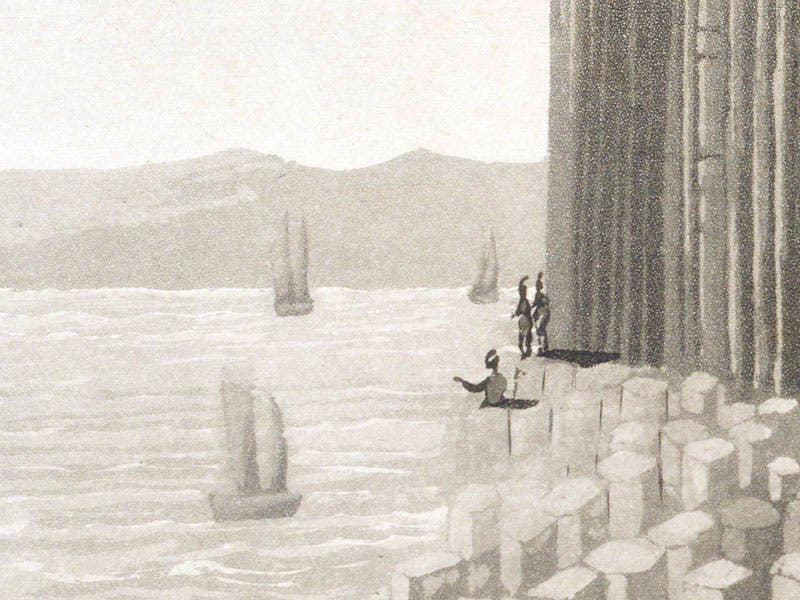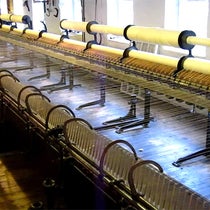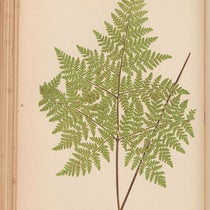Scientist of the Day - Charles-Louis-Fleury Panckoucke
Charles-Louis-Fleury Panckoucke, a French printer and artist, was born Dec. 26, 1780. Panckoucke is best known as the publisher of the 2nd edition of the Description de l'Egypte, 1821-30, which he began printing before the 1st edition was even completed. We have the 1st edition of the Description de l'Egypte in the Library, but not Panckoucke's edition.
We do, however, have another book that Panckoucke wrote and published that is quite lovely in its own right. Sometime before 1831, Panckoucke visited the Hebrides islands in western Scotland, stopping at Staffa to see the noted Fingal's Cave. He made drawings during his visit, and on his return he published L'Ile de Staffa et sa grotto basaltique. This is a tall thin folio, in which 11 of his drawings were reproduced as aquatints. He also included as a frontispiece a folding map of the Inner Hebrides.
We reproduce here 4 of those aquatints, and a detail of the engraved map. The images show: a distant view of several islands, with Staffa at the far left (second image); the isle of Staffa all by itself (third image); a boat landing on the columnar basalt outside Fingal’s Cave (first image); and a view from inside the grotto, looking out (fourth image).
We also show a detail of the map, locating Staffa just to the west of the isle of Iona (fifth image).
Since the illustrations require little explication, we thought we would say something here about the aquatint process. It involves covering a copper plate with a rosin powder and then heating the plate, so that the rosin dries, shrinks and cracks. If the plate is now etched (immersed in acid), a very fine network of lines will produce tone, which can be varied from light to dark by stopping out various areas of the plate. Aquatints came into use for book illustrations about 1800 and were most often employed for landscape views such as these. Under magnification, the characteristic reticulated signature of the aquatint becomes visible (sixth image).
Interestingly, while Panckoucke was preparing this book for publication, Felix Mendelssohn was preparing his Fingal’s Cave Overture for its first performance; it premiered in 1832. We gave Mendelssohn temporary Scientist of the Day status several years ago, and included four views of the cave in our discussion, including one from Panckoucke’s book.
To find more examples of the use of aquatints in scientific illustration, type “aquatint” in the search box at upper right.
Dr. William B. Ashworth, Jr., Consultant for the History of Science, Linda Hall Library and Associate Professor, Department of History, University of Missouri-Kansas City. Comments or corrections are welcome; please direct to ashworthw@umkc.edu.


